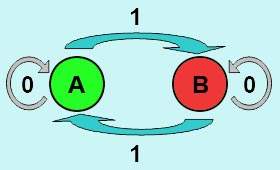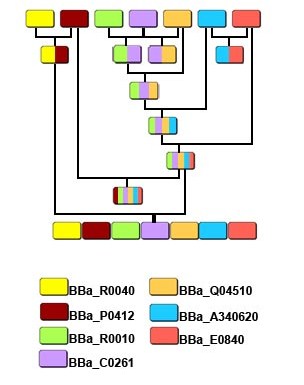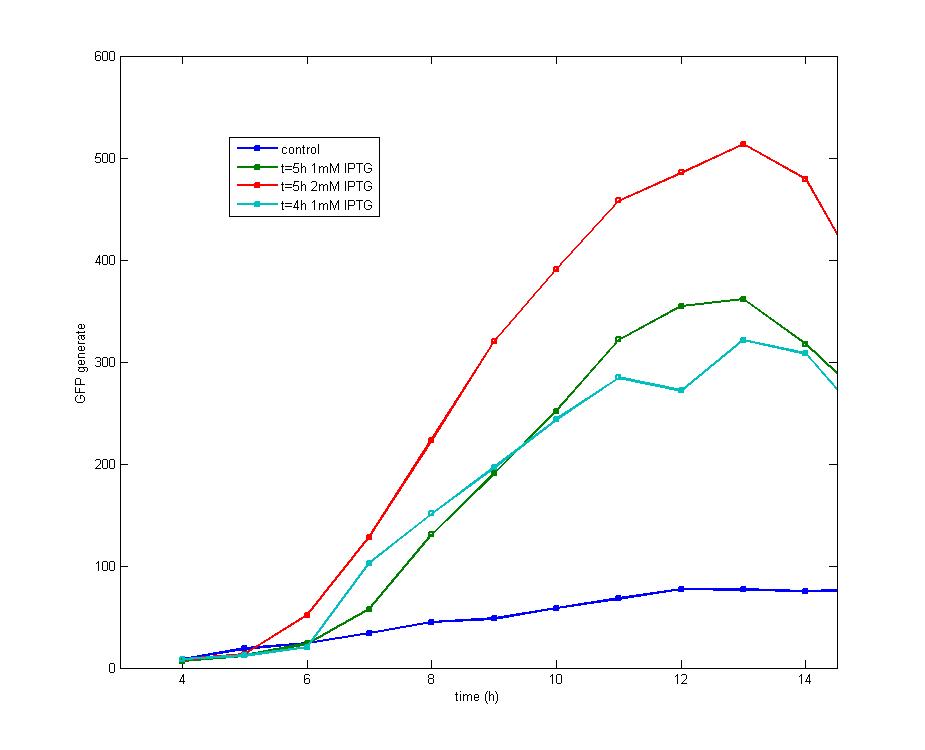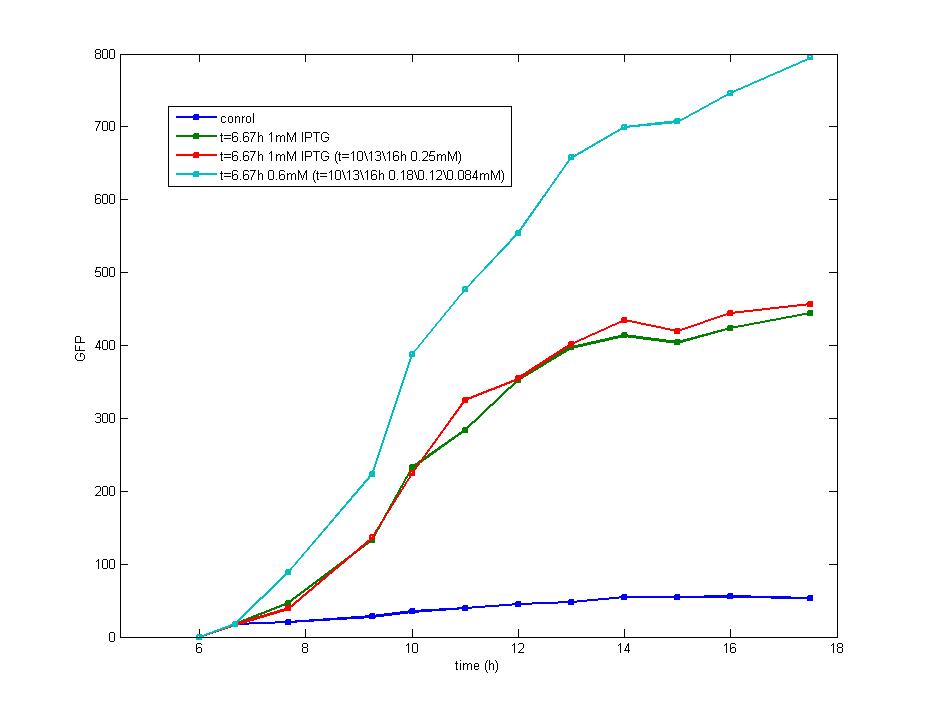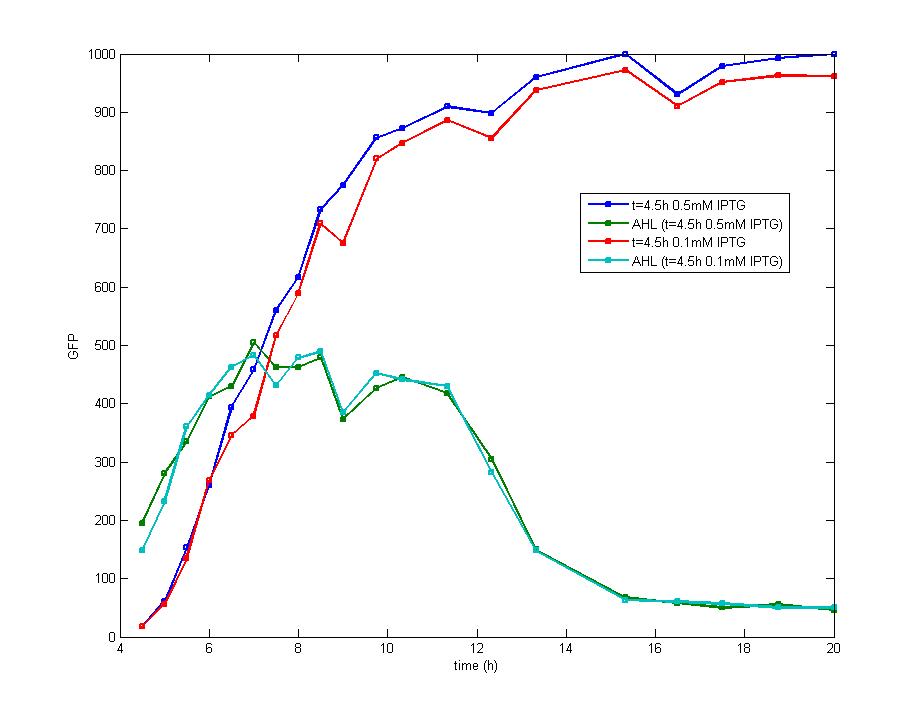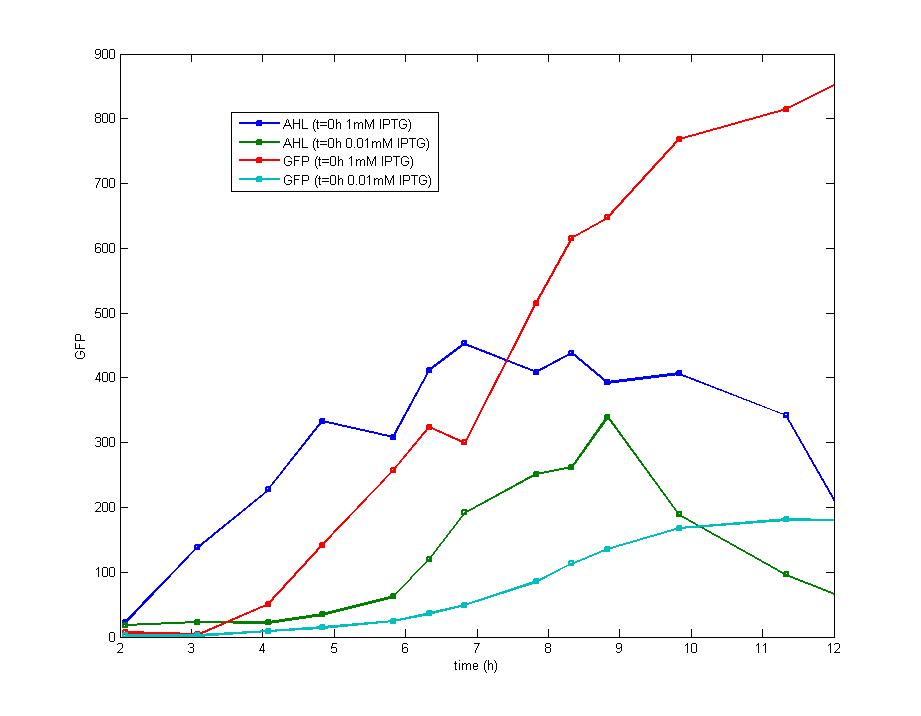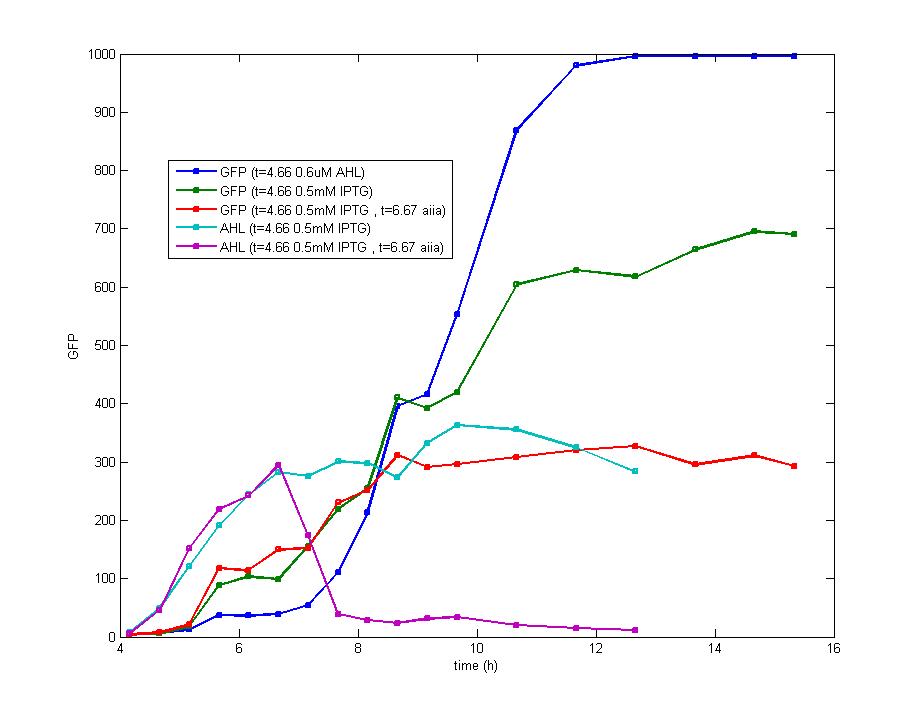Tianjin/FLIP-FLOP
From 2007.igem.org
Sunlovedie (Talk | contribs) (→Experiment) |
Lovecarrot (Talk | contribs) (→Modeling) |
||
| Line 22: | Line 22: | ||
==Modeling== | ==Modeling== | ||
| - | + | The Mathematical model is maily based on Ordinary Differential Equation. | |
| - | + | and the assumption that GFP protein could degrade in a short period instead of accumulating as the actual wet experiment showed. | |
<font size="3" color="#0000CC">1.</font>[[Tianjin/FLIP-FLOP/model1|<font size="3" color="#0000CC">Construction of Mathematical Model</font>]] | <font size="3" color="#0000CC">1.</font>[[Tianjin/FLIP-FLOP/model1|<font size="3" color="#0000CC">Construction of Mathematical Model</font>]] | ||
Revision as of 03:31, 26 October 2007
Design"Flip-flop" is the common name given to two-state devices which offer basic memory for sequential logic operations. Flip-flops are widely used for digital data storage and transfer as well as in banks called "registers" for the storage of binary numerical data. Based on the conception of "Flip-flop" and synthetic biology, we designed the Genetically RS FLIP-FLOP whose output signal is regulated by additional input signal. Besides this, we modulate the performance of Genetically RS FLIP-FLOP to optimize our original design. 1.Introduction to the logic rules of our flip-flop
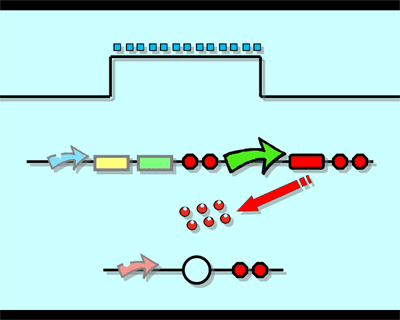 |
ModelingThe Mathematical model is maily based on Ordinary Differential Equation. and the assumption that GFP protein could degrade in a short period instead of accumulating as the actual wet experiment showed. 1.Construction of Mathematical Model 2.Model Result
|
Experiment1.Tianjin/FLIP-FLOP/Experiment/parts|Ligation Strategy and Parts Reservoir
|
